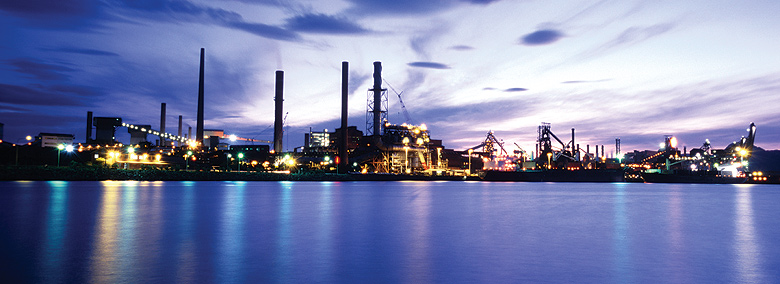
BlueScope Steel announced a full-year profit of $136.3 million on August 24. This is an improvement on last year’s loss of $83 million, but not by much compared to past profits.
The results were released on the day the Australian share market suffered its worst fall since the global financial crisis, yet BlueScope’s share price went up by almost 9%.
BlueScope produces 2.6 million tonnes of steel a year at its Port Kembla plant in Wollongong, which was known as Steeltown when 25,000 workers were employed there in the early 1980s.
Today its 5000 directly-employed workers produce 500,000 tonnes of steel more than the domestic market needs. This is exported at a loss of $200 a tonne.
With the imminent closure of the vehicle production industry, this excess will rise by 80,000 tonnes.
Falling demand in Australia’s domestic steel market is not the only concern for BlueScope. China’s annual steel production capacity is 1.1 billion tonnes and as its building industry contracts it too is in the export business.
During the first seven months of this year China’s steel exports rose by 27%. By the end of the year they are expected to reach 100 million tonnes — up from 53 million tonnes just two years ago.
The global oversupply and China’s dumping have already led to thousands of job losses at two of the world’s largest steelmakers, US Steel and Arcelor Mittal.
BlueScope itself is under scrutiny for allegedly dumping steel products onto the US market.
With all this bleak news, why did BlueScope’s share price rise? Apparently the market judged BlueScope Steel chief executive Paul O’Malley was on the money by “providing clarity” with his statement that 500 jobs had to go immediately.
O’Malley was reported as saying: “The market knew the steelworks was losing money and was basically losing patience around how we were dealing with it.”
What O’Malley actually did was effectively announce that the Port Kembla steelworks would be closed, with the formal decision to be made at BlueScope’s Annual General Meeting on November 19.
In doing so, he shifted the onus onto the unions and the NSW and federal governments to save the plant — and gave them until mid-October at the latest to do it.
To keep the plant open requires savings of $200 million, which the unions and the state and federal government have to provide. If they do not, the steelmaking operation gets shut down, 5000 direct and 10,000 indirect jobs go, the Illawarra’s Gross Regional Product loses $3.3 billion, and the region’s official unemployment rate rises to from the already high 8.2% to 17%.
O’Malley made a point of telling the market that there was almost no financial difference to the company in the end between keeping the plant open with $200 million in savings and shutting it down, “but potentially, if you shut everything down you might get a less risky operational profile in the whole business” he is reported as saying.
The cost of closing-down the steelworks only remaining blast furnace would be about $760 million, excluding remedial costs. But this is what the market wants.
In their analysis, the closure costs would be paid for in two years and BlueScope could concentrate on its profitable coated products division, which employs about 350 workers at Port Kembla.
In the end it’s the market that will make the decision. The best guide to the steelworks future in the next few weeks is BlueScope’s share price. If it continues to rise, so too will the prospect of closure.
Like the article? Subscribe to Green Left now! You can also like us on Facebook and follow us on Twitter.
Comments
bendigo1977@yah... replied on Permalink